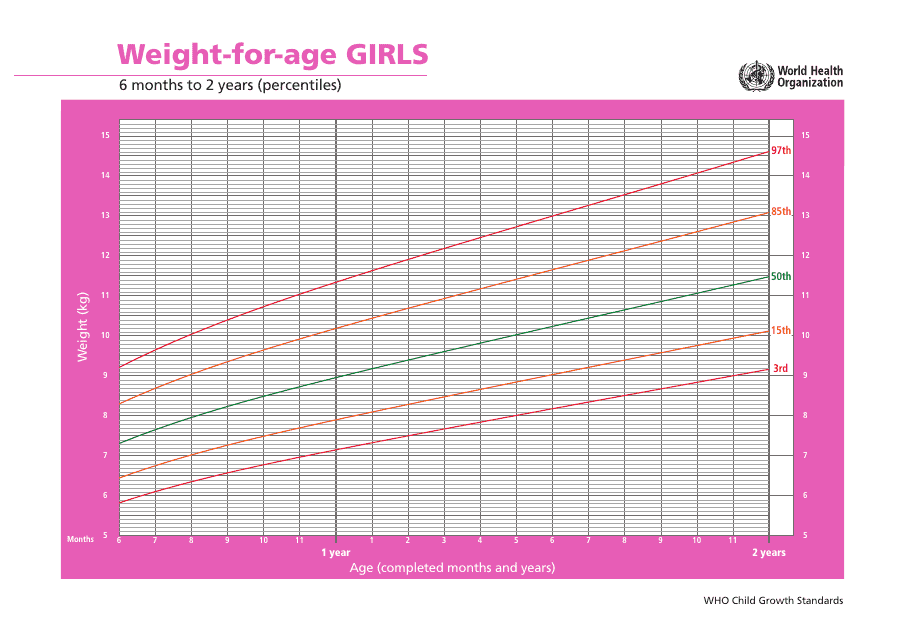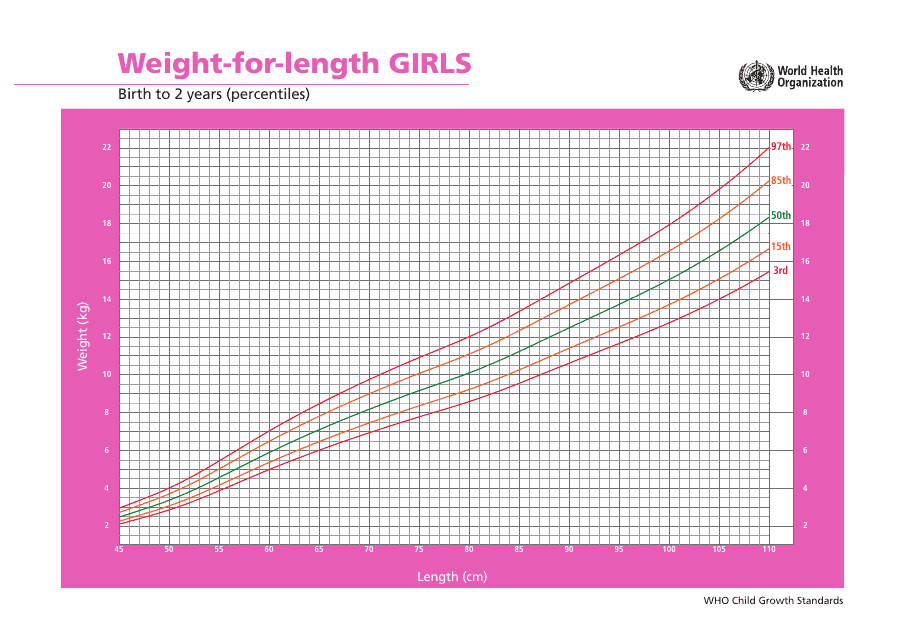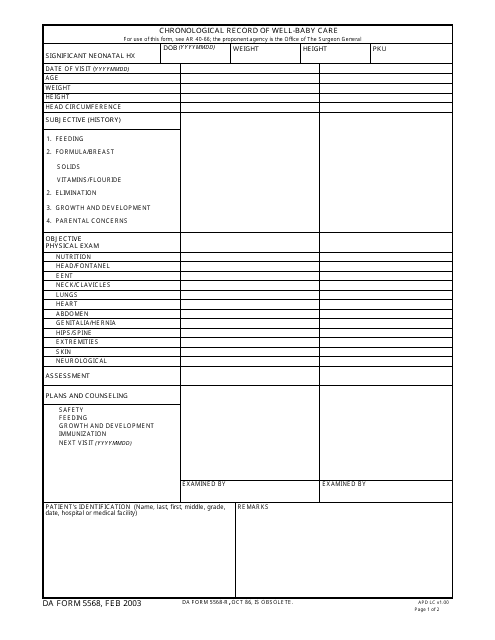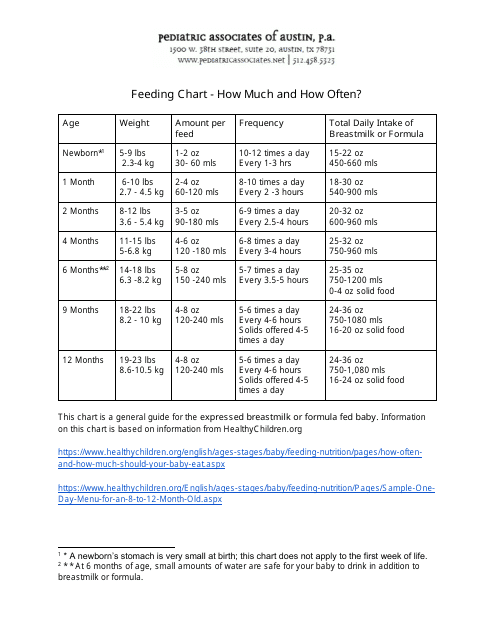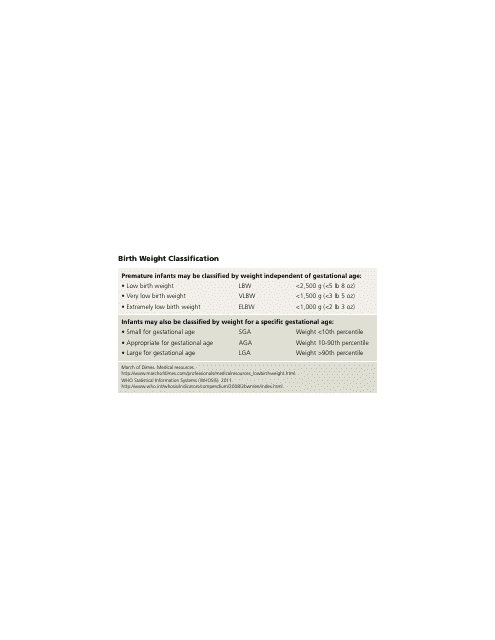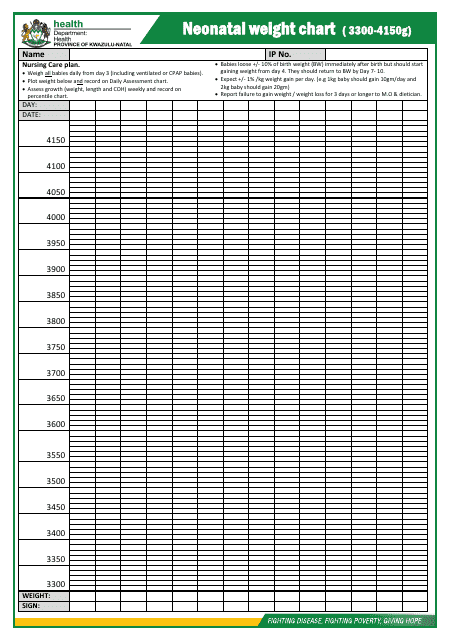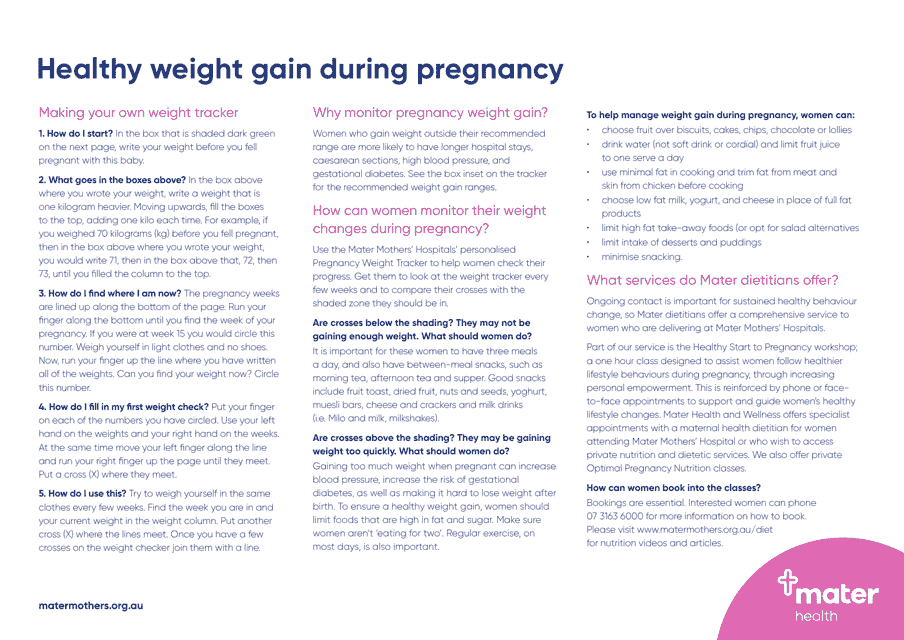Free Baby Weight Chart Templates
Baby Weight Chart: What Is It?
A Baby Weight Chart is an elaborate diagram that demonstrates the average growth of a baby over the first weeks and months of their life.
Alternate Name:
- Baby Growth Chart.
It is natural parents are curious about the development of their babies - the kids grow fast, eat more, and reach new milestones, yet sometimes it may look like they are not growing rapidly enough or are exhibiting signs of being overweight. While the pounds are not the only metric you should care about when it comes to the health of your child, it is a solid indicator of health and proper nutrition. Make weighing a part of your weekly routine and figure out how to manage the appropriate calorie intake to the baby's benefit.
For a full list of Baby Growth Chart templates please check out our library below.
How to Read a Baby Growth Chart?
Doctors and concerned parents alike often refer to a Baby Weight Chart by Month to understand whether the baby gains weight consistently and know the child is not in any danger of being underfed or overfed. Moreover, constant monitoring of the baby's weight will allow healthcare professionals to prescribe the correct amount of medication often needed to maintain health. Here is how you can interpret the information you find on a Baby Weight Chart:
- Choose the right instrument for the upcoming analysis . There are different graphs for boys and girls - and a Baby Weight Chart by Week will give you more precise results. Prepare a pencil and a ruler in case you want to indicate the weight of your baby on the chart as a part of your own observations or as a step recommended by the doctor.
- Look at the bottom of the diagram to see the exact age of your child . Draw a line that crosses that dot or mark on the graph. Weigh the baby and find the same number on the left of the chart - this mark should also be crossed. The two lines you have put on the diagram intersect - note the spot and look at the curve depicted next to it. Follow the curve to the right-most spot to see the answer you are interested in - it will show you the percentile at the current moment. Most children are between 5% and 95% depicted on the chart - this weight is considered normal.
- If the diagram has any free space, you may use it to enter the readings you get . Make sure you weigh your child at the same time of the day for the accuracy of results and keep the details in your records even if nothing is wrong.
- Remember the most important thing - if the measurements seem off or there are any issues or symptoms you have noticed whether they are related to the weight of your child or not, schedule an appointment with the pediatrician to share your concerns . The doctor will also weigh your baby, examine them, and possibly suggest supplements and vitamins beneficial for health and further physical development.
Still looking for a particular template? Take a look at the related templates below:
Documents:
13
This document provides a weight-for-age chart specifically designed for girls between the ages of 6 months to 2 years. It helps track and compare the weight of young girls to ensure healthy growth and development.
This chart shows the average weight for length percentiles for girls from birth to 2 years old. It can help track a child's growth and development.
This document is used for keeping a chronological record of well-baby care.
This document provides a size chart for nappies (diapers) and pants. It helps parents determine the correct size for their baby's needs.
This document is a baby feeding chart that helps parents keep track of when and how much they are feeding their baby. It is useful for monitoring feeding patterns and ensuring that the baby is getting the right amount of nutrition.
This document provides a chart that displays the average birth weights for infants at various gestational ages. It is used by healthcare professionals to monitor and assess newborns' growth and development.
This document provides a guide for converting baby weight measurements between different units such as pounds and kilograms. It helps parents and healthcare professionals keep track of a baby's growth and monitor their weight.
This type of document provides a chart showing the average weight for boys based on their length. It is used as a reference tool for monitoring a child's growth and development.
This document provides a chart that displays the average weight range for newborn babies in the first few weeks of life.
This type of document is a prenatal weight gain assessment chart that helps track weight gain during pregnancy.
This document is a tool for tracking weight gain during pregnancy for women who are overweight. It helps monitor and manage healthy weight gain to ensure a safe and healthy pregnancy.
This document provides a chart that helps expecting mothers track and manage their weight gain throughout pregnancy.
This document is a chart that helps parents track their baby's feeding and diaper changes. It provides a convenient way to monitor and record essential information about their baby's daily routines.

